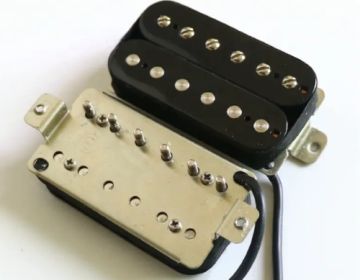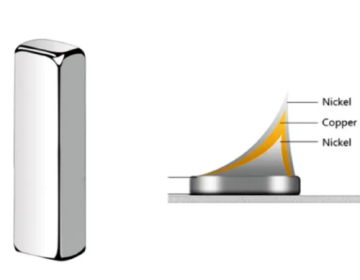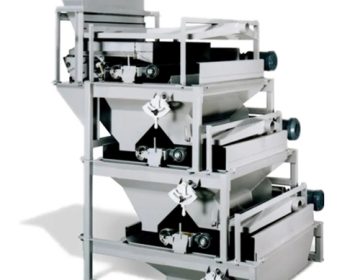Frequently Asked Questions
- 1. What does the Grade of the magnet mean?
The grade of a magnet directly refers to the Maximum Energy Product of the material that composes the magnet. It in no way refers to the physical properties of the magnet. Simplistically, grade is generally used to describe how “strong” a permanent magnet material is. The energy product is specified in the units Gauss Oersted. One MGOe is 1,000,000 Gauss Oersted. A grade forty (N40) would have a Maximum Energy Product of 40 MGOe. The higher the grade the “stronger” the magnet.
- 2. What is the pull strength of your magnets?
Pull strength is a very subjective measure that is dependent upon many factors such as:
• Type of material being pulled against;
• Surface conditions;
• Physical contact;
• Magnet characteristics such as plating composition;
• Presence or absence of lateral and rotational forces.
All that being said, we provide pull force values for most of our magnets as a general guide. - 3. Your published pull force values are less than values published by other suppliers. Why?
Pull force values are notoriously inaccurate because there is no defined standard for conducting magnetic pull force measurement. We try to be conservative knowing that real world circumstances generally reduce perceived pull force values.
- 4. What metals will magnets attract?
The elements iron, nickel, cobalt, and gadolinium are ferromagnetic. These elements, including materials that contain these elements such as steel, can be attracted by magnets.
- 5. What is the Gauss of your magnets?
The Remanence of Grade 40 magnetic material has a maximum value of about 12,900 Gauss (1.29 Tesla). This measurement is an indication of the strength of the magnetic material not the individual magnet you are purchasing. The actual magnetic induction measured on the surface of a magnet using a gaussmeter is generally much less. We specify the surface field strength of all of our magnets on their product detail page.
- 6. Is one pole stronger than the other?
No. Both North and South poles of a magnet have the same strength.
- 7. How long will a magnet stay magnetized?
Sintered Nd-Fe-B magnets will remain magnetized indefinitely. They experience a miniscule reduction in flux density over time. As long as their physical properties remain intact, neodymium magnets will likely lose less than 1% of their flux density over 100 years. Generally, magnets will experience degradation in their physical properties, such as corrosion, before demagnetizing due to age. However, heat and high magnetic fields can demagnetize these magnets.
- 8. Will my magnets demagnetize if I heat them?
Yes, if you heat them beyond 170 degrees Fahrenheit (80 degrees Celsius) the magnets will begin to lose their magnetic properties. Sustaining these temperatures for a length of time or heating the magnet significantly higher than this will permanently demagnetize it. Other types of magnets such as Samarium-Cobalt have higher heat resistance. There are also other types of Nd-Fe-B magnets that are not as susceptible to heat induced flux degradation.
- 9. Can Nd-Fe-B magnets be drilled and machined?
Not easily or safely. Nd-Fe-B sintered magnets behave like a ceramic. They have a tendency to crack and chip when drilled. Additionally, the powder produced when machining these magnets is flammable. Lastly, machining causes heat to build up in the magnet which may result in it being demagnetized.
- 10. Can magnets cure disease?
As far as we know, no one has definitively linked static magnetic field to the cure of any medical ailment. You should seek qualified medical assistance if you have a health problem.
- 11. Is it safe to take magnets on airplanes?
Yes and no. Magnets can affect the navigational equipment on an aircraft. Most single small magnets are not capable of significantly affecting these instruments from a moderate distance. The US Department of Transportation and the International Air Transport Association have set precise guidelines for the transport of magnets by air. If the magnets you are transporting exceed certain thresholds, they will be considered Class 9 Hazardous Materials and should only be placed on an aircraft by trained and certified personnel. We recommend that you keep all magnets on the ground and transport them by surface transport only.
- 12. I would like to get a single pole magnet?
They don’t exist. All magnets have at least two poles.
- 13. Can you provide radially magnetized magnets?
Radially magnetized magnets have a single pole on the outside of a ring or cylinder and the opposite pole on the inside of the ring. We are unable to produce this type of magnet.
- 14. Can you make very large magnets?
Large magnets are very difficult to handle and transport. They are also quite dangerous because they present a crushing hazard. For these reasons we do not manufacture very large magnets.
- 15. Can I levitate one magnet over another?
Static magnetic levitation is thought to be impossible but you’re welcome to try.
- 16. Will stacking magnets make them stronger?
Yes. Stacking two identical magnets will behave similarly to a solid magnet of the same dimensions as the two stacked magnets.
- 17. Can I weld of solder rare earth magnets?
No. The magnets will demagnetize under heat and may catch fire.
- 18. Should I use a keeper (a steel piece running from North to South pole) to store my magnets?
Keepers are not necessary with neodymium magnets because of their high coercivity.
- 19. What is the Curie temperature of a magnet?
The Curie temperature of a magnet is the temperature above which it becomes paramagnetic. Basically, it is the point where the magnet will completely demagnetize.
- 20. What is the operating temperature of a magnet?
The point at which the magnet will begin to demagnetize. The higher the temperature, the faster it will demagnetize.
- 21. Can I purchase unplated neodymium magnets?
We can produce unplated neodymium magnets but the neodymium alloy is subject to corrosion.
- 22. Can you make a custom sized magnet?
Yes. You can fill out the custom magnet request form or call us directly to discuss your requirements.
- 23. Can I use your magnets in a marine environment.?
We would not recommend it because even plated magnets will eventually oxidize in salt air.
- 24. What adhesive should I use to glue your magnets?
All of our stock magnets are plated in nickel. Nickel is a metal that is highly resistant to corrosive attack. This corrosion resistance prevents the metal from reacting with most chemicals that are commonly incorporated into adhesives to develop a bond between the adhesive and the substrate. In addition, when nickel is used as a plating it forms an extremely smooth, hard surface that further reduces the ability of an adhesive to bond to the metal. We recommend using a quality two-part epoxy adhesive such as Devcon 5 Minute® Epoxy Gel with the following surface preparation before applying the epoxy:
• Clean and degrease the surface of the nickel plating using an industrial solvent degreaser (alcohol and common detergents are not effective degreasers);
• Abrade the surface with 200 grit emery cloth without removing the plating;
• Degrease and clean the surface again;
• Test the surface with water. If the surface wets and the water does not bead, it is ready for the application of adhesive;
• Allow to dry. - 25. Can I paint your magnets?
Yes, but the paint will have the same problem adhering to the nickel plating as an adhesive will. You should try the surface preparation instructions above before painting.
- 26. Will painting or coating the magnets decrease their magnetic force?
Not much. Anything applied to the surface of the magnet will increase the air-gap or space between the magnet and what it is held to. The larger the air-gap the less holding force the magnet will have. The paint is so thin that its impact is insignificant.
More in Action

Alnico pickups are a type of electric guitar or bass pickup that uses an alloy of aluminum, nickel,…

NdFeB magnets are crafted from a mixture of neodymium (Nd), iron (Fe), and boron (B), offering a unique…

A magnetic drum separator is an essential device used to separate ferrous materials from non-ferrous ones in bulk…
